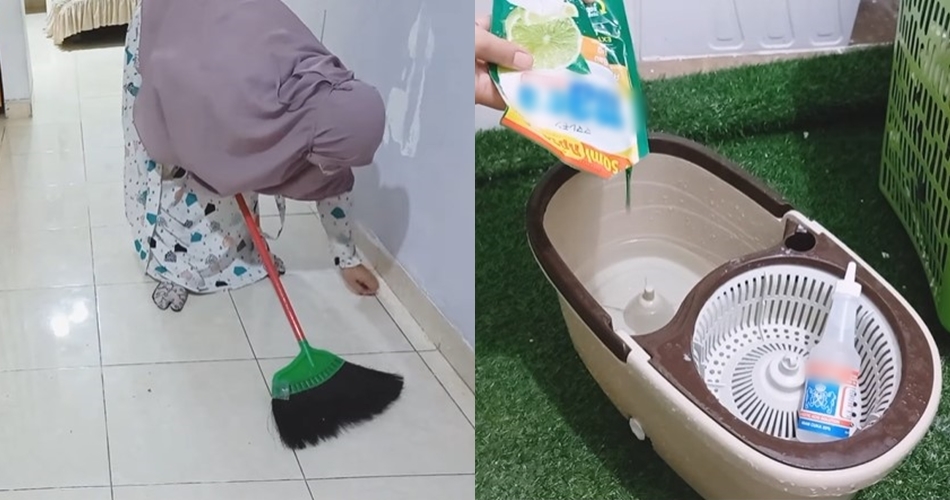foto: YouTube/me_FSmom
Brilio.net - When you are busy, many people don't have time to mop the floor regularly. As a result, the floor becomes dirty and feels oily. This condition is definitely very uncomfortable. Usually, the kitchen floor is the one that gets dirty and oily the most easily.
If the kitchen floor is very dirty and oily, usually it will be difficult to get it dirty if you just mop it using the normal method. That's why many people choose to add a little salt to the mop water solution. It is believed that salt can help remove stubborn stains and make the floor rougher.
However, unlike netizens on the YouTube account me_FSmom, this woman admitted that she didn't need salt at all to mop the floor. He has two other kitchen ingredients that are no less effective at making dirty and oily floors shiny again. According to him, this floor mopping trick can be practiced 3 times a week.
Tricks for mopping oily floors to make them dirty clean.
First, sweep the entire floor of the house so that the stains and crust that are still attached can be removed. Prepare lukewarm water in a bucket. Next, pour enough vinegar and dish soap into the bucket.
Yup, vinegar and soap are the main kitchen ingredients for practicing this trick of mopping oily floors to make them dirty. Then, dip the mop into the cleaning mixture and stir until evenly mixed.
"I actually don't recommend using this vinegar often, but you can use it 3 times a week. Because of what? Because this vinegar is quite acidic and strong, so if you use it often, especially on ordinary ceramics like this, it could damage the ceramic edge," explained the owner of the YouTube account me_FSmom, quoted by BrilioFood on Tuesday (27/2).

photo: YouTube/me_FSmom
After that, squeeze the mop and immediately use it to wipe the entire floor area of the house. The owner of the YouTube account me_FSmom said that she usually dries the floor immediately after mopping it using a clean cloth that she steps on with her foot. According to him, this technique not only speeds up dry floors, but also makes the floors much cleaner.

photo: YouTube/me_FSmom
Wow, even without adding salt, this floor mopping trick is really satisfying, isn't it? Taking a peek at me_FSmom's YouTube upload which has been watched 11 thousand times, several netizens have left enthusiastic comments about this trick, you know.
How to clean kitchen utensils using vinegar.
The benefits of vinegar can not only be obtained by floors, but also other household furniture, especially kitchen utensils. Take a peek at several ways to clean a number of kitchen utensils using vinegar below.
1. Plates and bowls.
Mix vinegar with warm water and use this mixture to wash plates and bowls. Vinegar can help remove stubborn stains and grease.
2. Cooking utensils.
Pots, pans, and other cooking utensils that are rusty or crusty can be cleaned with vinegar. Soak cookware in a mixture of vinegar and warm water for several hours or overnight, then brush or rinse thoroughly.
3. Stainless steel equipment.
Vinegar is a good choice for cleaning stainless steel appliances. Wipe or spray vinegar on the stainless steel surface, then wipe with a clean cloth to remove stains and leave the surface sparkling.
4. Refrigerator and freezer.
Mix vinegar with warm water and use this mixture to clean the refrigerator and freezer. Vinegar can help remove unpleasant odors and kill bacteria.
5. Sink faucet.
Vinegar can also be used to clean water taps. Dampen a cloth with vinegar and wipe the surface of the faucet to remove stubborn stains and limescale.
6. Glassware and plates.
Vinegar can help clean glassware and dishes, including glasses, plates, and bowls. Soak the equipment in a mixture of vinegar and warm water, then rinse thoroughly.
7. Coffee and tea making equipment.
To clean coffee and tea makers, mix vinegar with water and run a cleaning cycle with the solution. This helps remove residue and stains that may form from daily use.
(brl/tin)